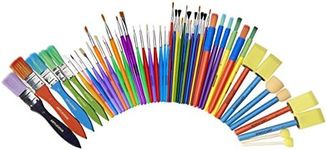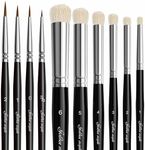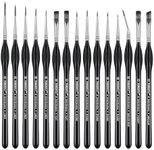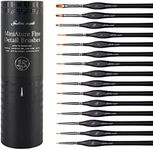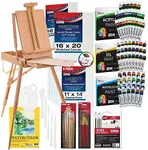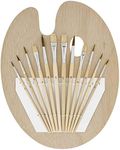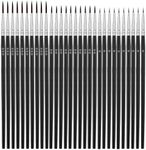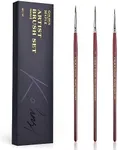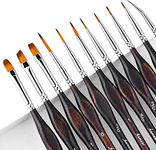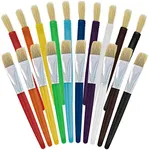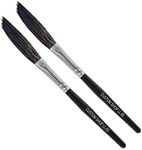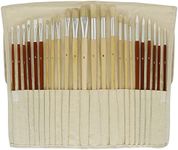We Use CookiesWe use cookies to enhance the security, performance,
functionality and for analytical and promotional activities. By continuing to browse this site you
are agreeing to our privacy policy
10 Best Miniature Paint Brushes 2025 in the United States
From leading brands and best sellers available on the web.How do we rank products for you?
Our technology thoroughly searches through the online shopping world, reviewing hundreds of sites. We then process and analyze this information, updating in real-time to bring you the latest top-rated products. This way, you always get the best and most current options available.

Buying Guide for the Best Miniature Paint Brushes
Choosing the right miniature paint brushes is crucial for achieving the best results in your painting projects. The right brush can make a significant difference in the quality of your work, whether you're a beginner or an experienced painter. When selecting miniature paint brushes, consider the type of bristles, the size and shape of the brush, and the handle design. Each of these factors can affect your painting experience and the final outcome of your work.Bristle TypeThe bristle type is important because it affects the brush's performance and durability. There are two main types of bristles: natural and synthetic. Natural bristles, often made from sable hair, are known for their excellent paint-holding capacity and smooth application. They are ideal for detailed work and fine lines. Synthetic bristles, made from materials like nylon or polyester, are more durable and easier to clean. They are suitable for general use and can be a good choice for beginners. Choose natural bristles for precision and synthetic for versatility and ease of maintenance.
Brush SizeBrush size is crucial as it determines the level of detail you can achieve. Sizes range from very fine (like 000) to larger sizes (like 2 or 3). Smaller sizes are perfect for intricate details and fine lines, while larger sizes are better for base coating and covering larger areas. If you are working on highly detailed miniatures, opt for smaller sizes. For more general painting tasks, a mix of small and medium sizes will be useful.
Brush ShapeThe shape of the brush affects the type of strokes you can make. Common shapes include round, flat, and pointed round. Round brushes are versatile and can be used for both detail work and broader strokes. Flat brushes are great for covering larger areas and creating sharp edges. Pointed round brushes are excellent for precision work and fine details. Choose round brushes for general use, flat brushes for base coating, and pointed round brushes for detailed work.
Handle DesignThe handle design impacts comfort and control. Handles come in various lengths and thicknesses. Shorter handles offer better control and are ideal for detailed work, while longer handles provide a better grip for broader strokes. Thicker handles can be more comfortable to hold for extended periods, reducing hand fatigue. Consider your painting style and comfort preferences when choosing the handle design. If you do a lot of detailed work, a shorter, thinner handle might be best. For general painting, a longer, thicker handle could be more comfortable.
FAQ
Most Popular Categories Right Now
